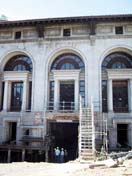
|
Image-CR0331
Exterior view of excavation showing temporary supports and scale of the project. The building, which is very close to surface tracings of the Hayward Fault, was rated seismically "very poor" before the retrofit. The reconstruction used high-damping rubber base isolation bearings and preserved most of the building's original details. (University of California, Berkeley)
|
|
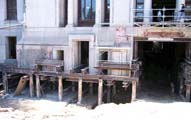
|
Image-CR0332
Exterior view of excavation and temporary bracing and shoring while new isolation bearings are installed under the building. (University of California, Berkeley)
|
|
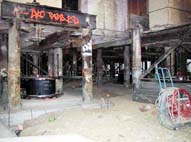
|
Image-CR0333
View of temporary bracing around new high-damping rubber isolation bearing. A new reinforced concrete column will connect the bearing to the overhead floor joists and temporary bracing will be removed. (University of California, Berkeley)
|
|
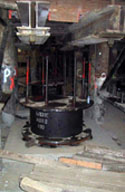
|
Image-CR0334
Close-up view of one of the high-damping rubber seismic isolation bearings in place under temporary bracing. A reinforced concrete column will be poured on top of the bearing to reach the joists and the temporary bracing removed. (University of California, Berkeley)
|
|
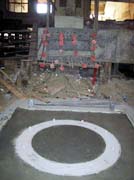
|
Image-CR0335
View of isolation bearing concrete foundation pad before installation of the high-damping rubber isolation bearings. (University of California, Berkeley)
|
|
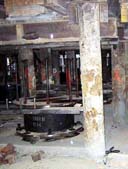
|
Image-CR0336
One of the high-damping rubber isolation bearings in place under the building awaiting construction of column between bearing and floor joists and removal of temporary pipe bracing. (University of California, Berkeley)
|
|
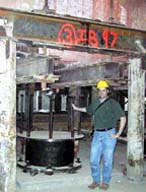
|
Image-CR0337
Base-isolation bearing in place under temporary bracing. Engineer provides indication of scale. These high-damping rubber isolation bearings are manufactured by Andre Rubber of U.K. (University of California, Berkeley)
|
|









